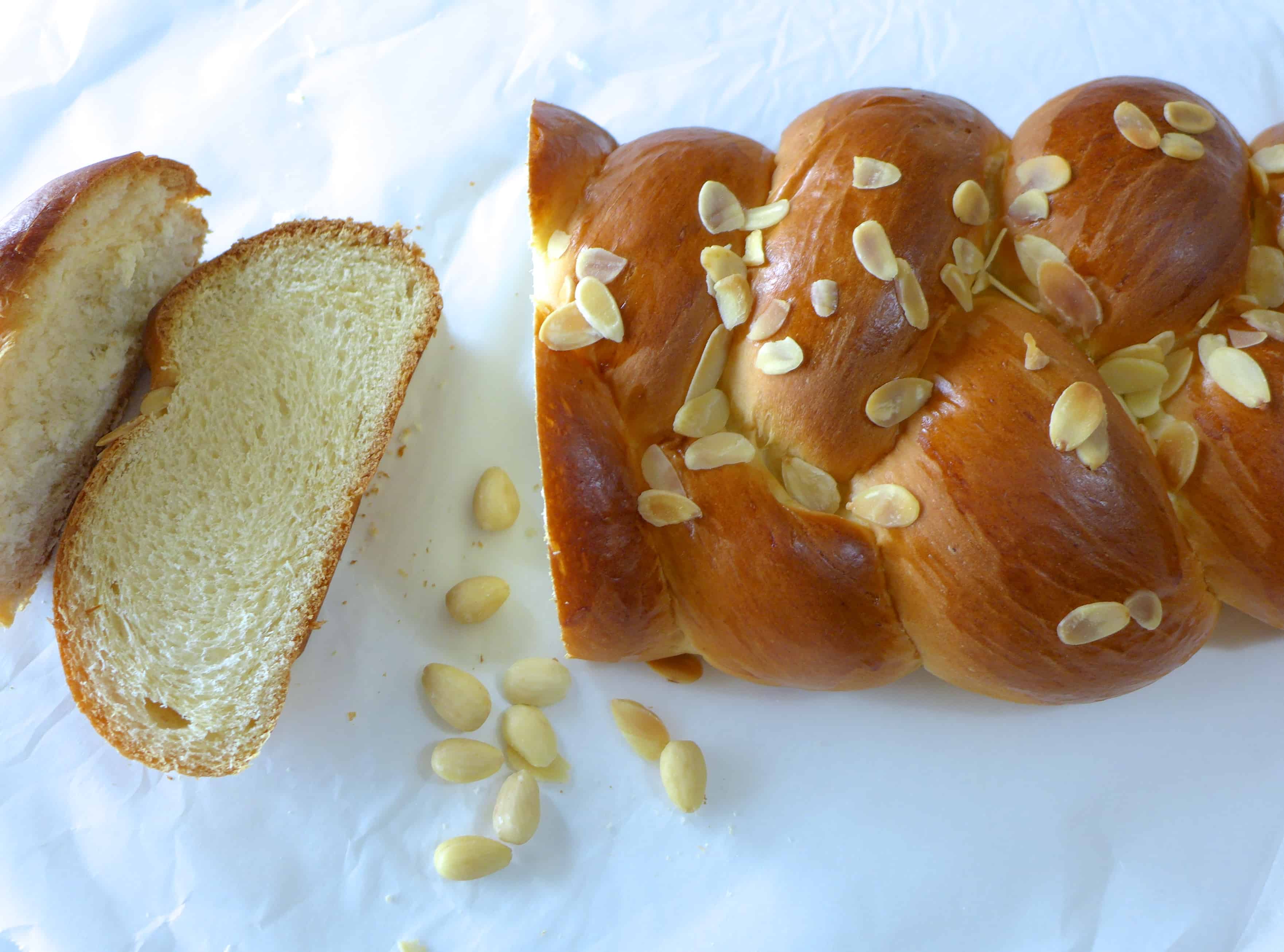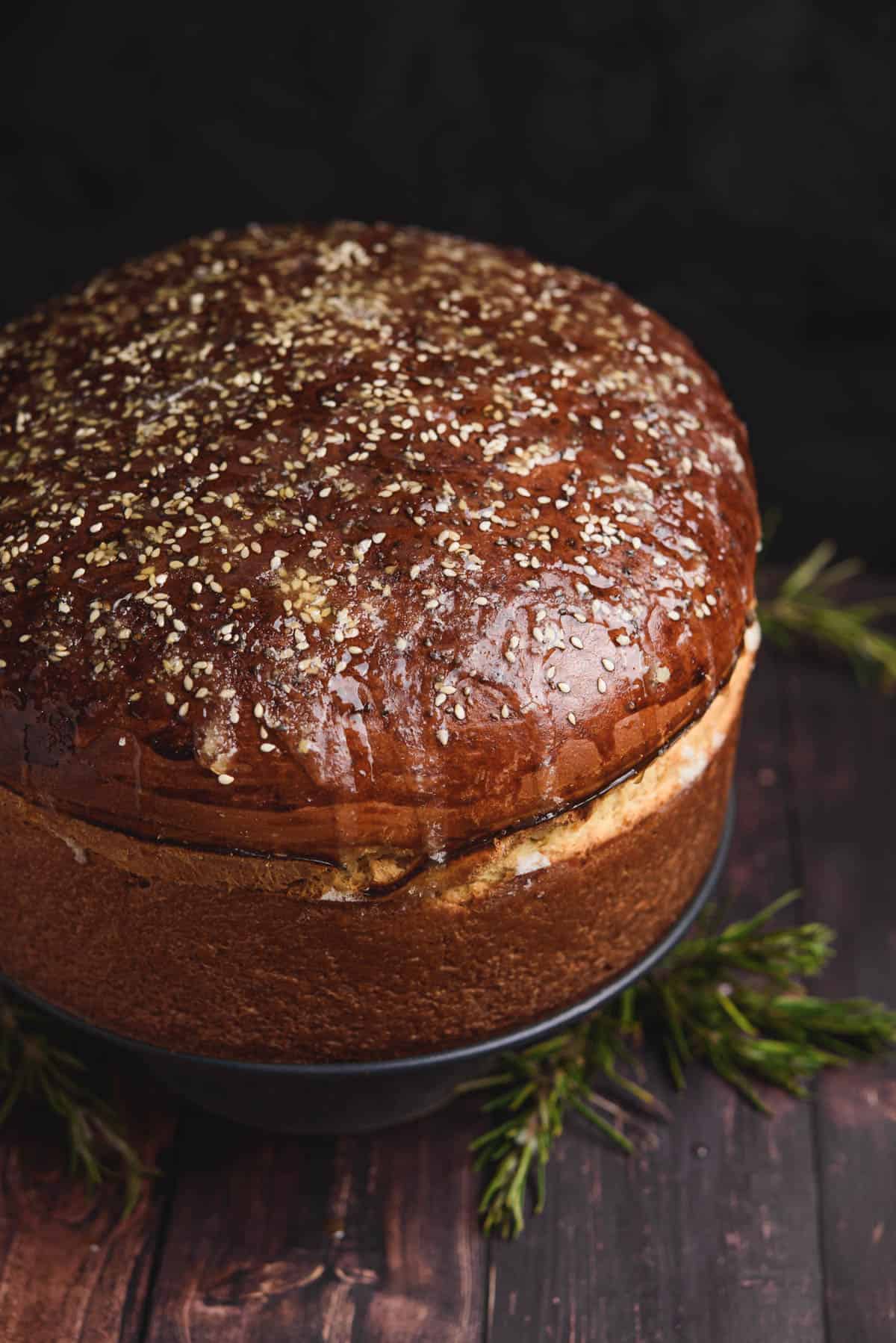Vasilopita Tsoureki: A Traditional Greek New Year's Bread is a delicious and festive bread that is enjoyed by Greeks all over the world. It is a sweet, yeast-based bread that is typically flavored with orange zest, cinnamon, and nutmeg. A coin is baked into the bread, and whoever finds the coin in their slice is said to be lucky in the coming year.
Editor's Notes: "Vasilopita Tsoureki: A Traditional Greek New Year's Bread" have published today date
Reason to read: In this guide, we have gathered all the information about "Vasilopita Tsoureki: A Traditional Greek New Year's Bread" that you need.
Key differences or Key takeways:
| Characteristic | Vasilopita Tsoureki |
| Type of bread | Sweet, yeast-based bread |
| Flavorings | Orange zest, cinnamon, nutmeg |
| Coin | Baked into the bread |
| Symbolism | Good luck in the coming year |
Main article topics:
- History of Vasilopita Tsoureki
- Ingredients and recipe
- Cultural significance
- Tips for making the perfect Vasilopita Tsoureki
FAQ
This section addresses common questions and misconceptions surrounding Vasilopita Tsoureki, a traditional Greek New Year's bread.

Tsoureki recipe (Traditional Greek Easter bread)-4 - My Greek Dish - Source www.mygreekdish.com
Question 1: What is Vasilopita Tsoureki?
Vasilopita Tsoureki is a sweet, brioche-like bread prepared in Greece to celebrate the New Year. It is characterized by a dense crumb, a slightly crunchy exterior, and an aromatic spice blend, typically including cinnamon and cloves.
Question 2: What is the significance of the coin hidden inside the bread?
A coin is traditionally hidden within the Vasilopita Tsoureki before baking, symbolizing good fortune and prosperity for the coming year. The person who finds the coin in their slice is believed to have an exceptionally fortunate year.
Question 3: How is Vasilopita Tsoureki served?
Vasilopita Tsoureki is typically served as a dessert or an accompaniment to coffee or tea on New Year's Day. It is often dusted with powdered sugar or garnished with festive decorations.
Question 4: Can Vasilopita Tsoureki be made ahead of time?
Yes, Vasilopita Tsoureki can be made a day or two in advance. Once baked, allow it to cool completely, wrap it tightly in plastic wrap, and store it at room temperature. Reheat it briefly in a preheated oven before serving.
Question 5: What are some variations of Vasilopita Tsoureki?
In addition to the traditional recipe, there are several variations of Vasilopita Tsoureki. Some popular variations include添加希腊酸奶、橘子皮屑或杏仁片。
Question 6: Where can I find Vasilopita Tsoureki outside of Greece?
Vasilopita Tsoureki is becoming increasingly popular outside of Greece and can be found in many Greek bakeries and specialty food stores. It can also be purchased online from various Greek food retailers.
Understanding these frequently asked questions provides a comprehensive perspective on Vasilopita Tsoureki, its significance, preparation, and availability.
Click here to see the recipe for Vasilopita Tsoureki.
Tips
Planning to make a Vasilopita Tsoureki: A Traditional Greek New Year's Bread? Here are some tips to ensure a delicious and successful bake:
Tip 1: Use high-quality ingredients. This will result in a tastier bread with a better texture.
Tip 2: Be patient with the dough. It takes time for the dough to rise, so don't rush the process.
Tip 3: Don't overwork the dough. This will make the bread tough.
Tip 4: Braid the dough carefully. This will ensure a beautiful presentation.
Tip 5: Bake the bread until it is golden brown. This will give it a crispy crust and a fluffy interior.
Summary of key takeaways or benefits: By following these tips, you can make a delicious and beautiful Vasilopita Tsoureki that will be enjoyed by all.
Transition to the article's conclusion: For more information on making Vasilopita Tsoureki, please see the full article.
Vasilopita Tsoureki: A Traditional Greek New Year's Bread
Vasilopita Tsoureki, an integral part of Greek New Year celebrations, holds cultural and symbolic significance. Exploring its various dimensions, we uncover its essence through six key aspects:
- Sweet Taste: Indulgent with a hint of orange zest and spice.
- Golden Crust: Shimmering with an egg wash,象征繁荣.
- Hidden Coin: Bringing good fortune to whoever finds it.
- Family Ritual: Shared among loved ones, fostering unity.
- Historical Connection: Originating from the Byzantine era, carrying cultural heritage.
- Symbolic Blessing: Bringing hope, prosperity, and new beginnings for the year ahead.

VASILOPITA ~ GREEK HOLIDAY BREAD — Amphora Bakery - Source amphorabakery.com
The sweet taste of Vasilopita Tsoureki symbolizes the hope for a year filled with joy. Its golden crust represents prosperity, while the hidden coin speaks to the ancient tradition of good fortune. The ritual of sharing the bread among family and friends strengthens their bonds. Its historical connection to the Byzantine era showcases the continuity of Greek culture. Finally, Vasilopita Tsoureki embodies the symbolic blessing of a new beginning, carrying the hopes and aspirations for the year to come.

Greek Vasilopita - New Year's Bread - Real Greek Recipes - Source realgreekrecipes.com
Vasilopita Tsoureki: A Traditional Greek New Year's Bread
Vasilopita Tsoureki is an integral part of Greek New Year's celebrations. It holds cultural and symbolic significance, representing good fortune and prosperity for the coming year. During its preparation, a coin is baked into the bread, and whoever finds the coin is believed to be blessed with good luck.

Greek Vasilopita - New Year's Bread - Real Greek Recipes - Source realgreekrecipes.com
The bread's connection to Greek tradition is further evident in its rich symbolism. The round shape of Vasilopita Tsoureki symbolizes the cycle of life and time, while the sweet taste represents the desired sweetness of the new year. The coin hidden within the bread is a reminder of the Byzantine era when coins were used as symbols of prosperity.
Understanding this connection provides insight into the cultural significance of Vasilopita Tsoureki and its role in perpetuating Greek traditions. It strengthens the bond between generations and contributes to the preservation of cultural identity.